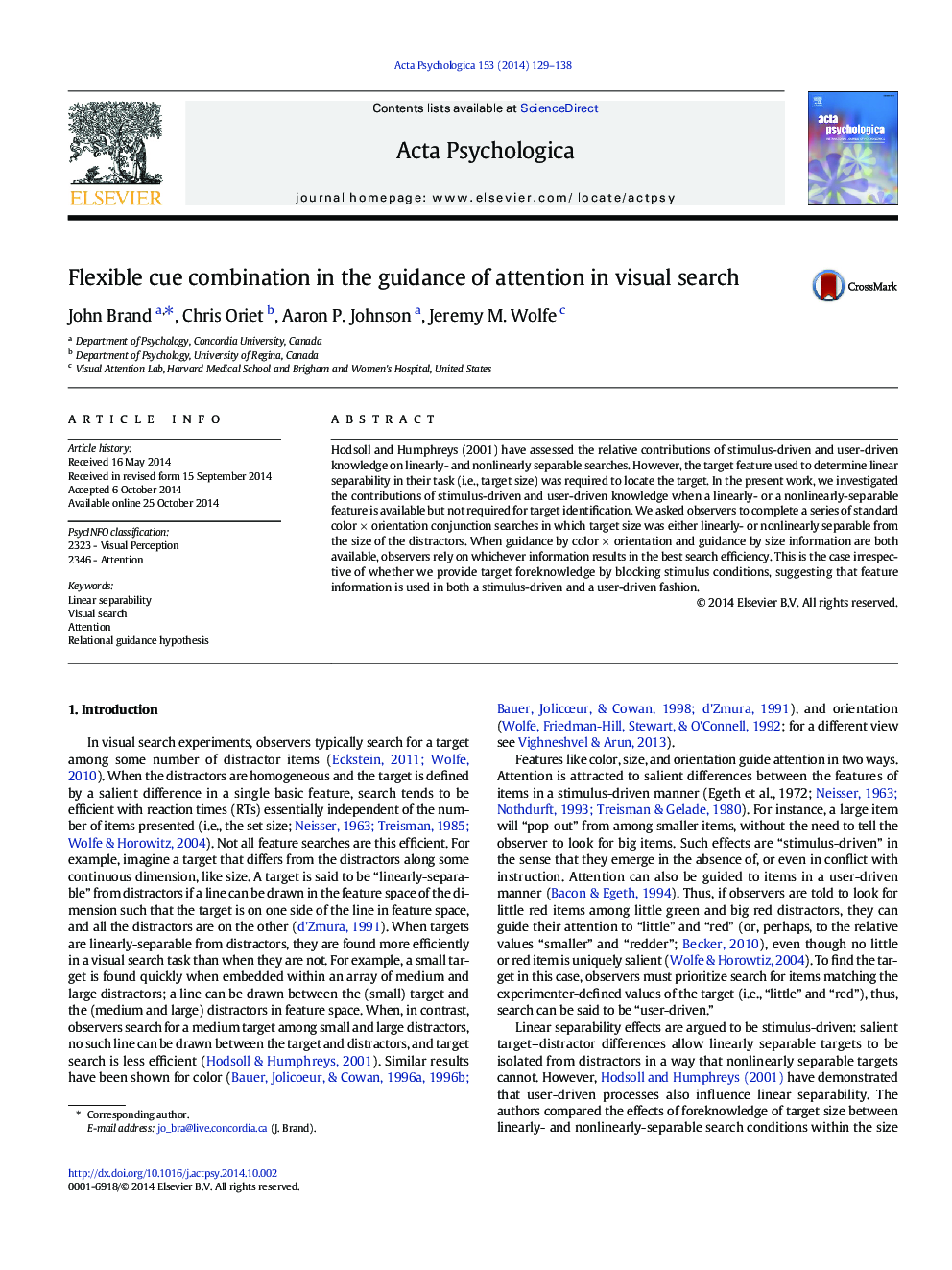| Article ID | Journal | Published Year | Pages | File Type |
|---|---|---|---|---|
| 919772 | Acta Psychologica | 2014 | 10 Pages |
•We manipulate target knowledge in search for linearly- and nonlinearly-separable targets.•The linearly-separable feature of the target is not required for target identification.•Observers adjust strategies in response to top-down knowledge to maximize search efficiency.
Hodsoll and Humphreys (2001) have assessed the relative contributions of stimulus-driven and user-driven knowledge on linearly- and nonlinearly separable searches. However, the target feature used to determine linear separability in their task (i.e., target size) was required to locate the target. In the present work, we investigated the contributions of stimulus-driven and user-driven knowledge when a linearly- or a nonlinearly-separable feature is available but not required for target identification. We asked observers to complete a series of standard color × orientation conjunction searches in which target size was either linearly- or nonlinearly separable from the size of the distractors. When guidance by color × orientation and guidance by size information are both available, observers rely on whichever information results in the best search efficiency. This is the case irrespective of whether we provide target foreknowledge by blocking stimulus conditions, suggesting that feature information is used in both a stimulus-driven and a user-driven fashion.
